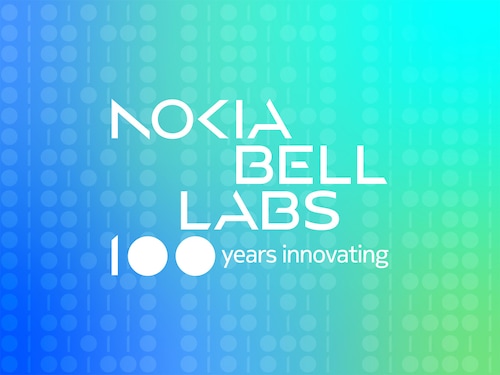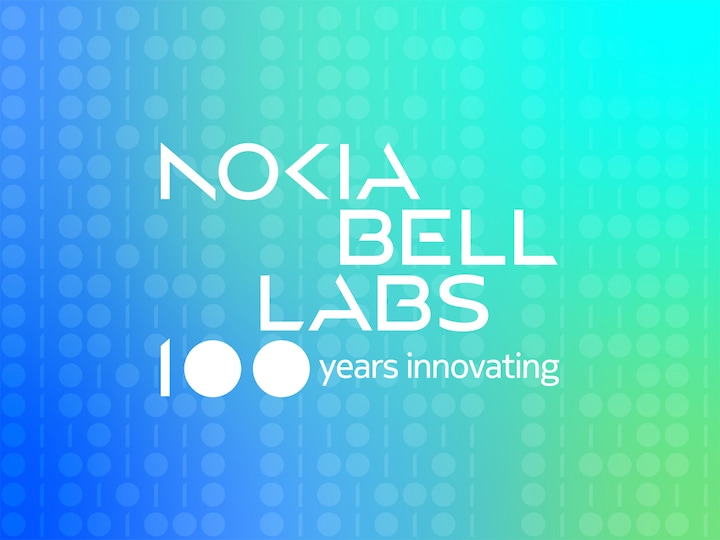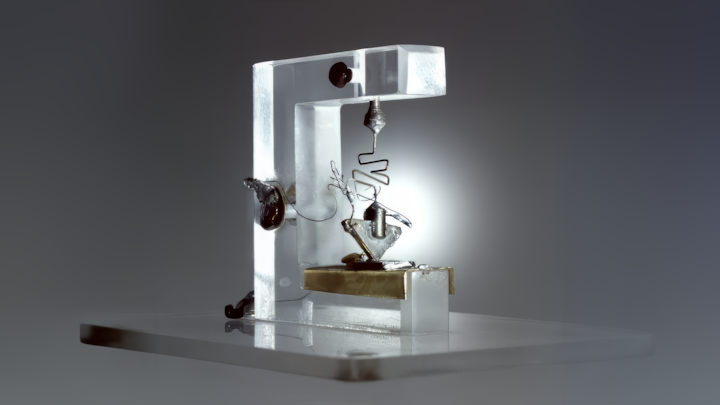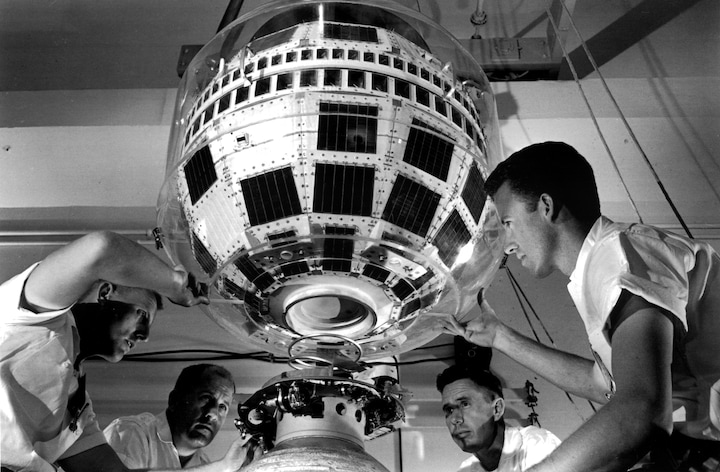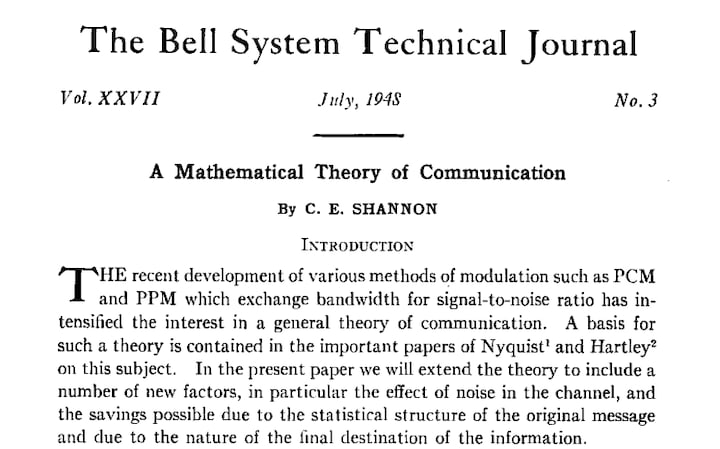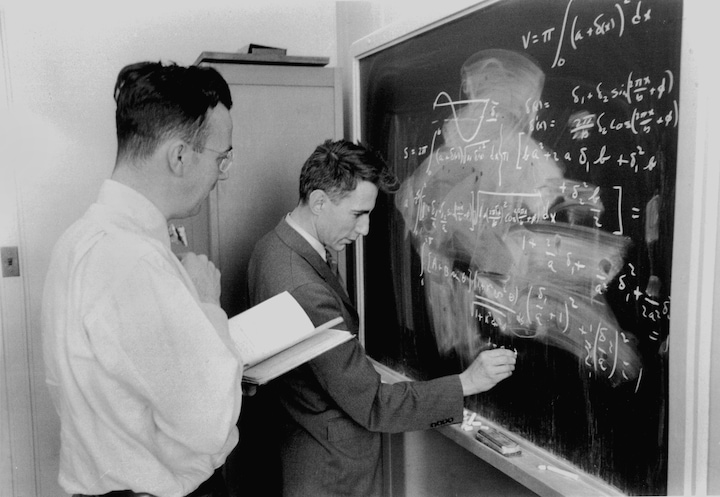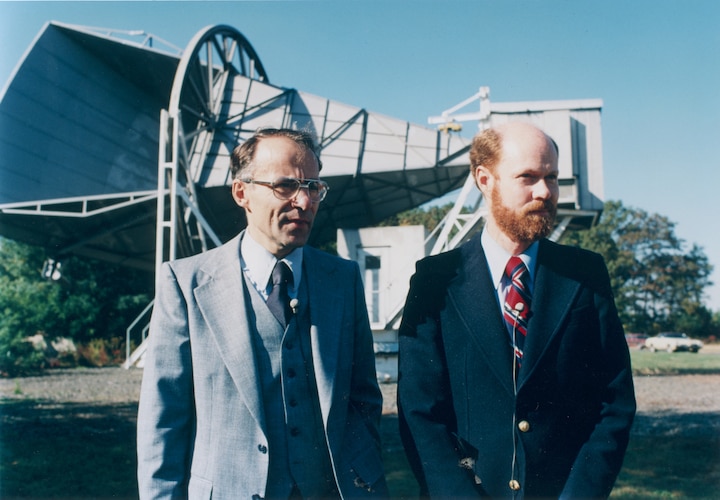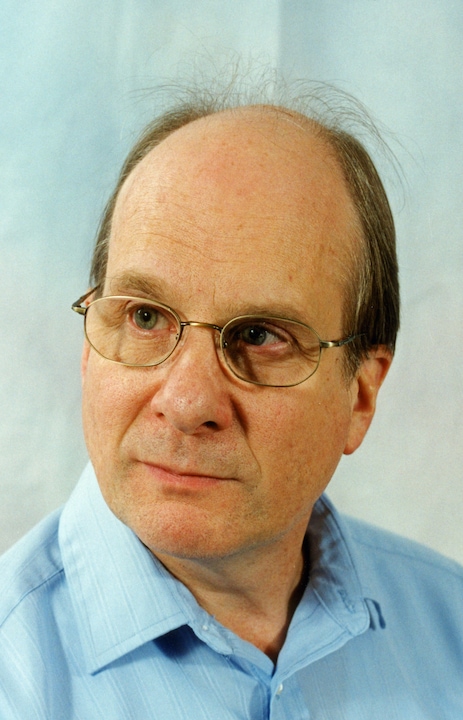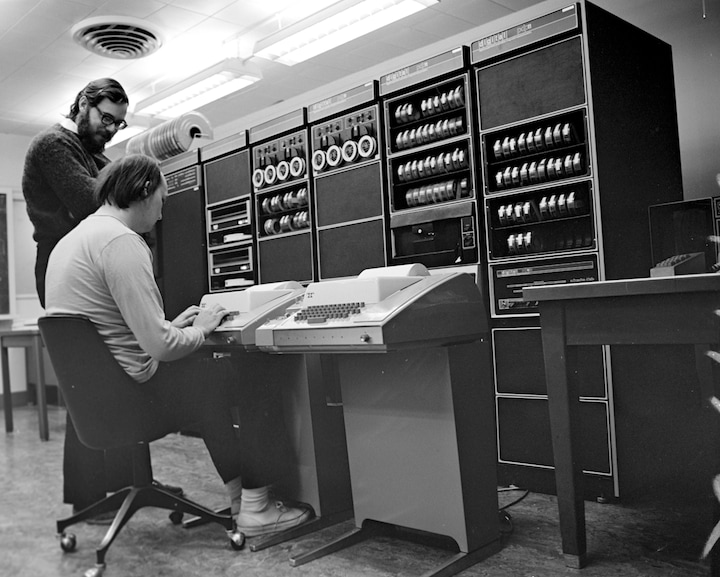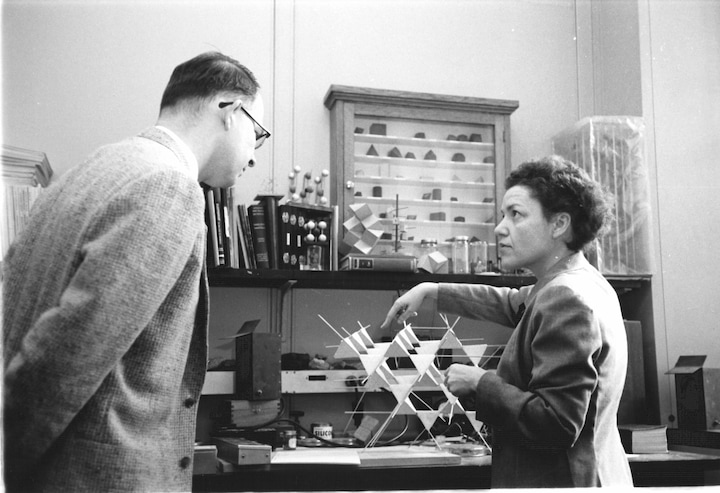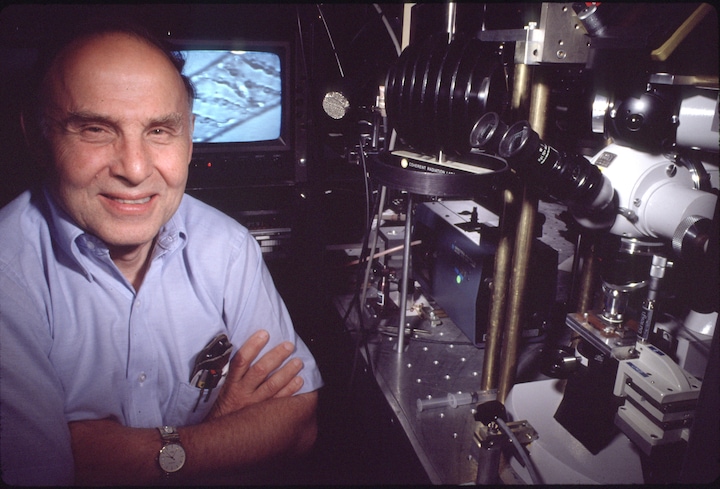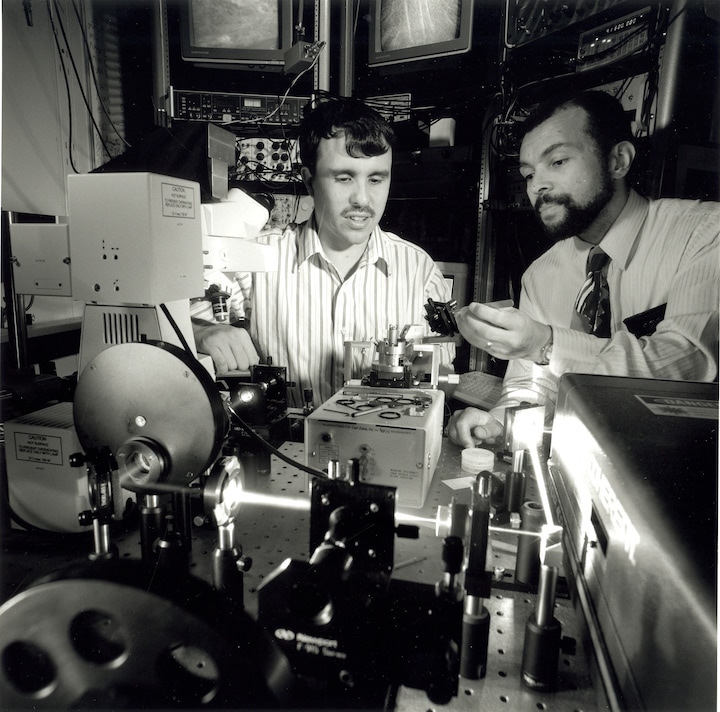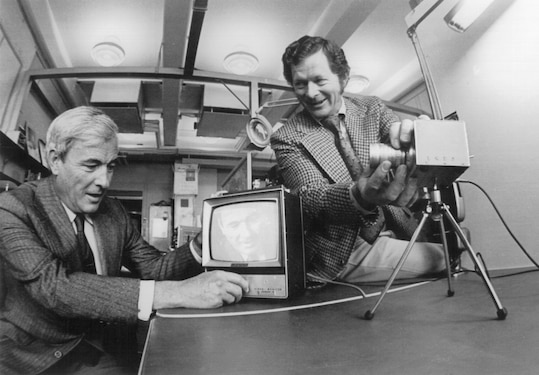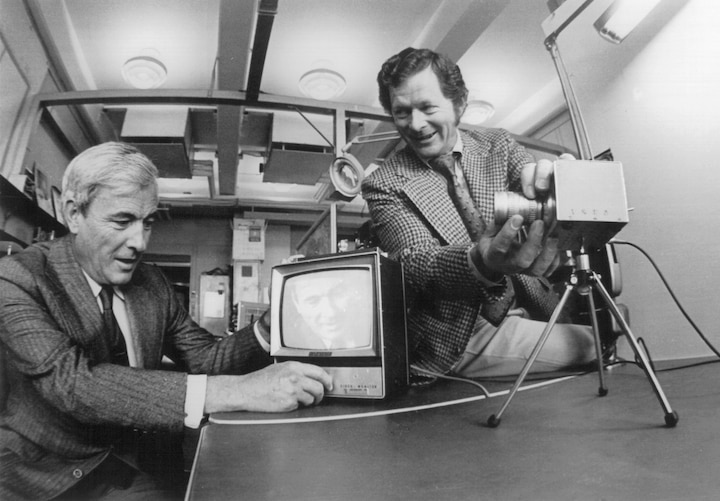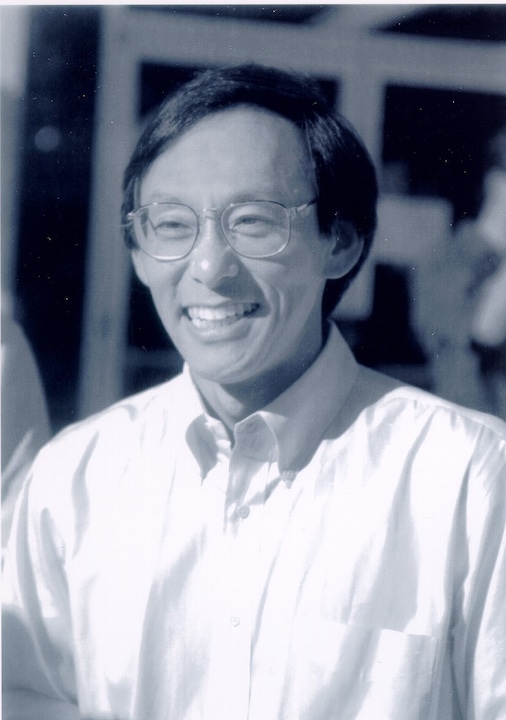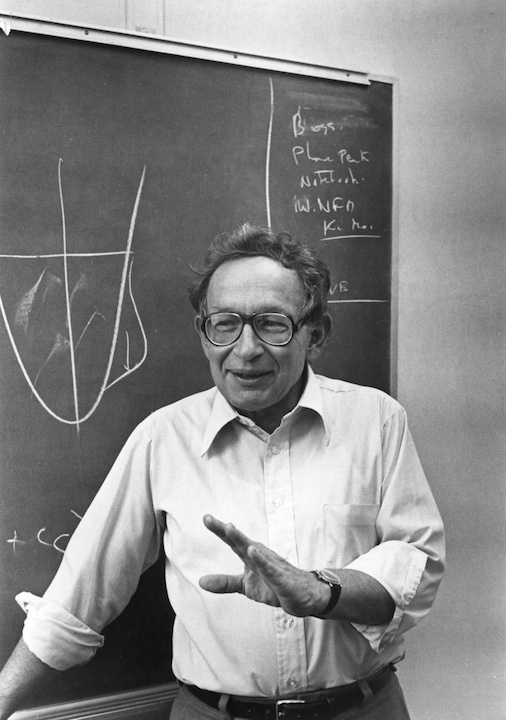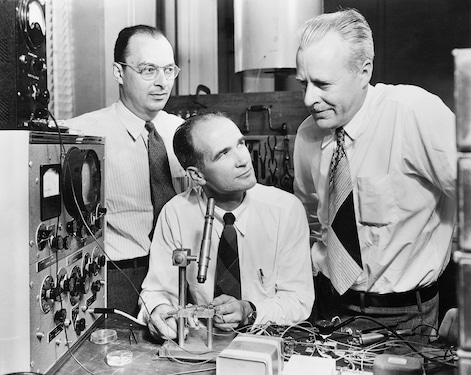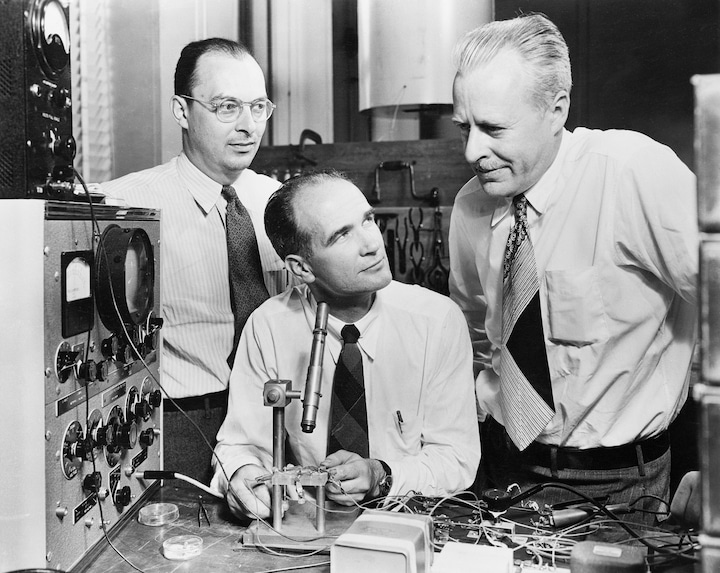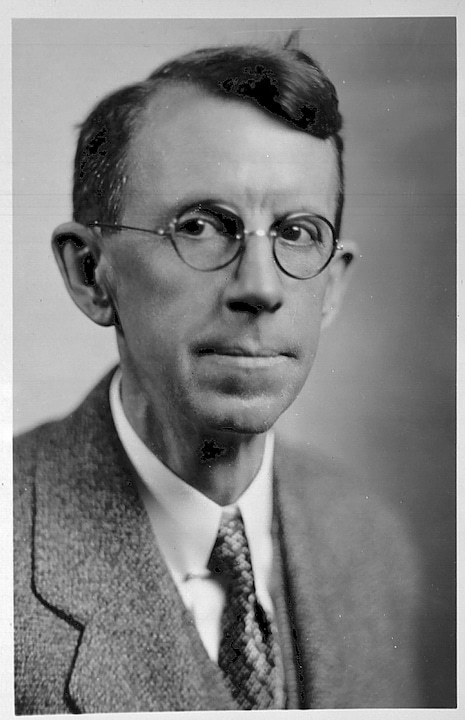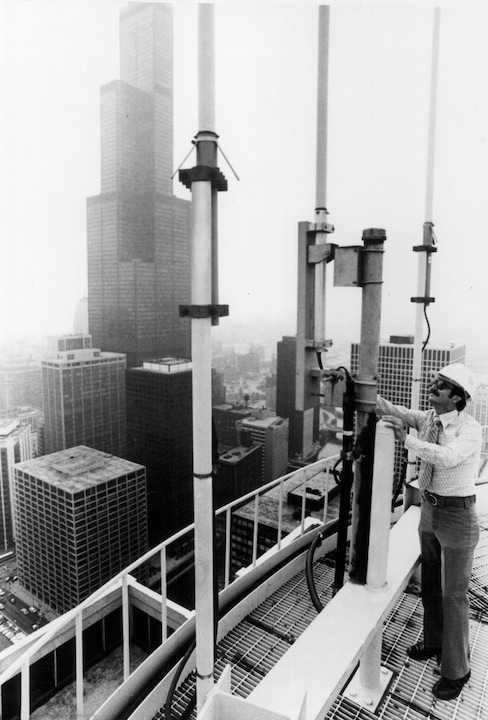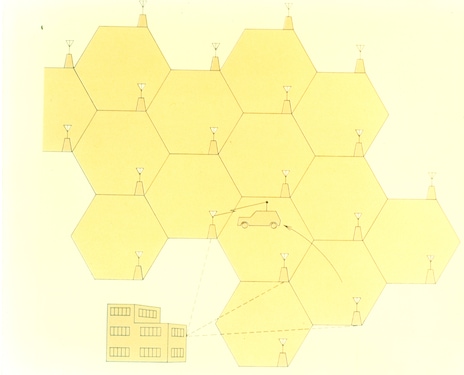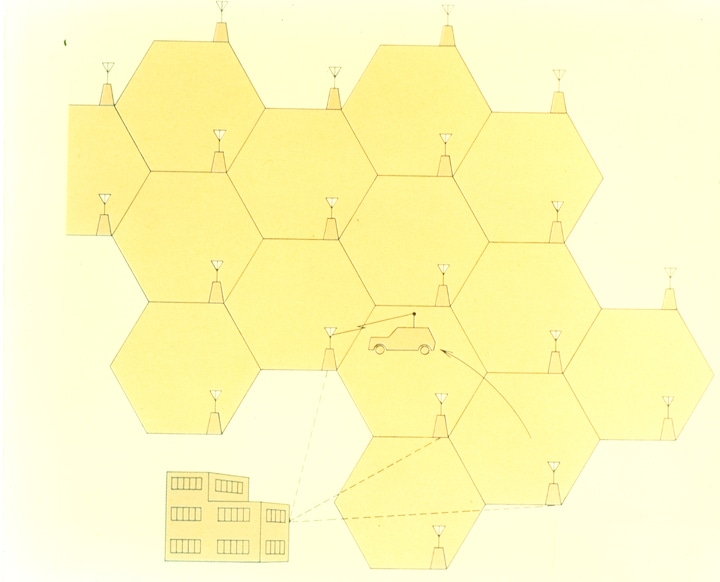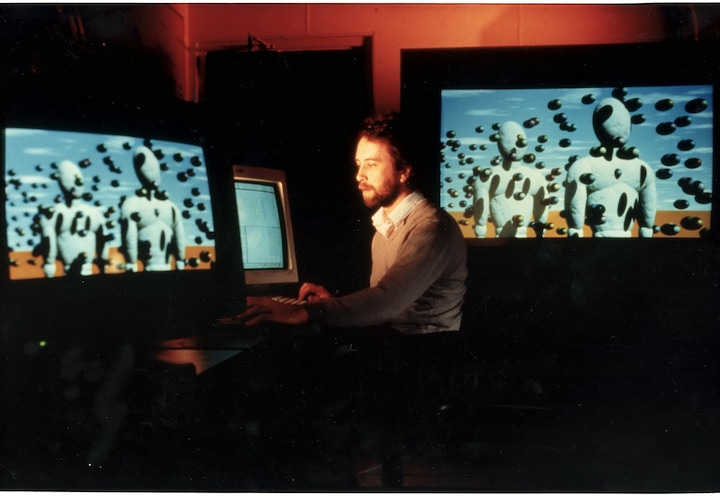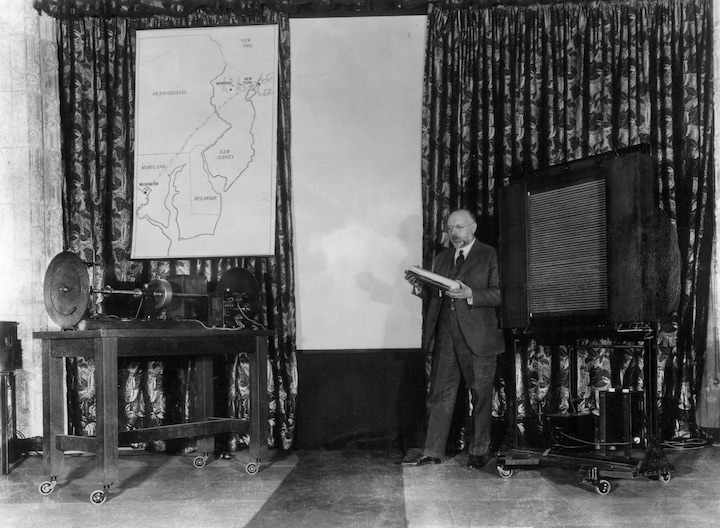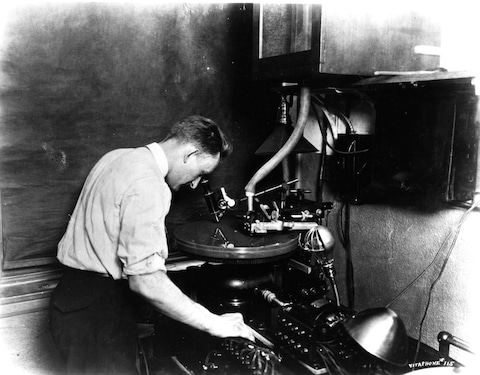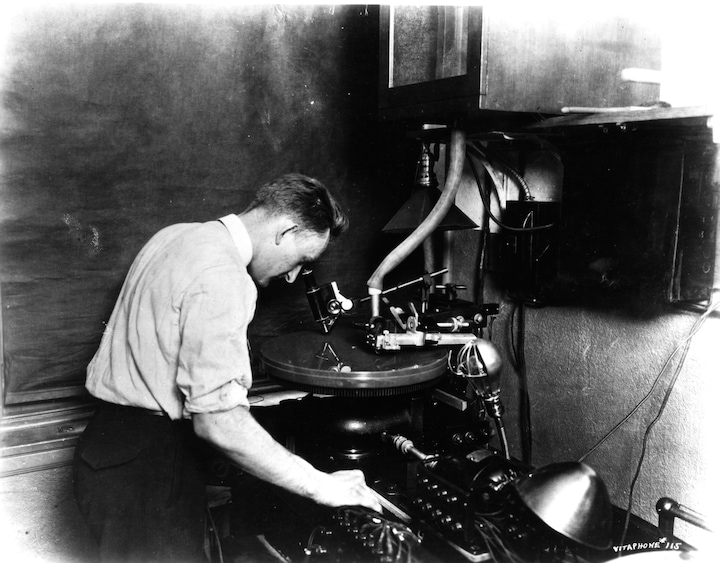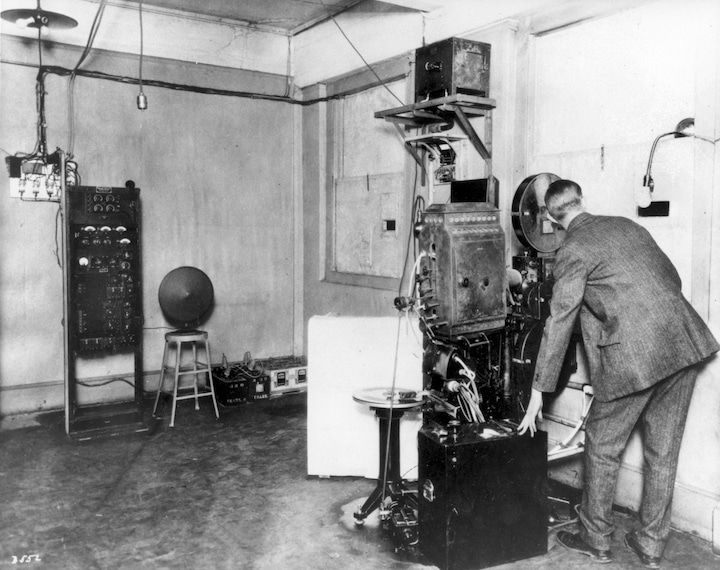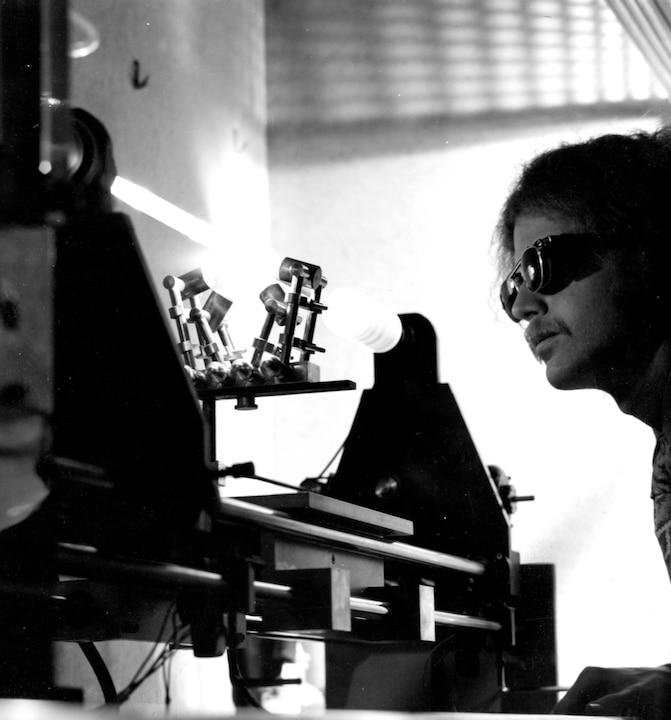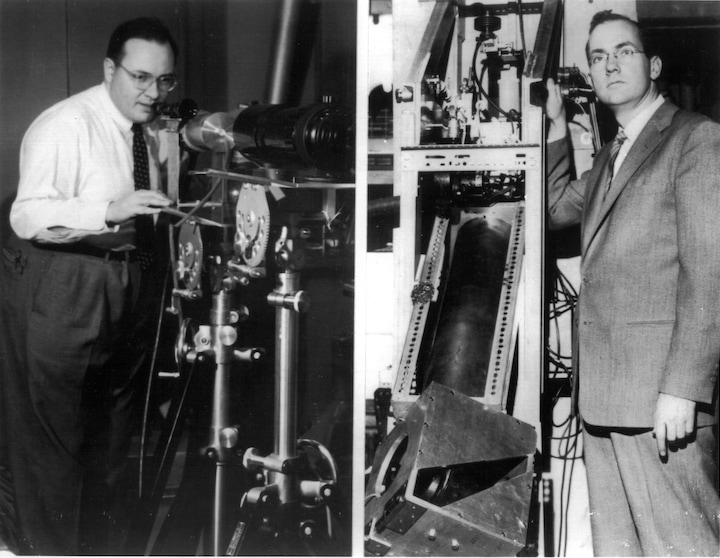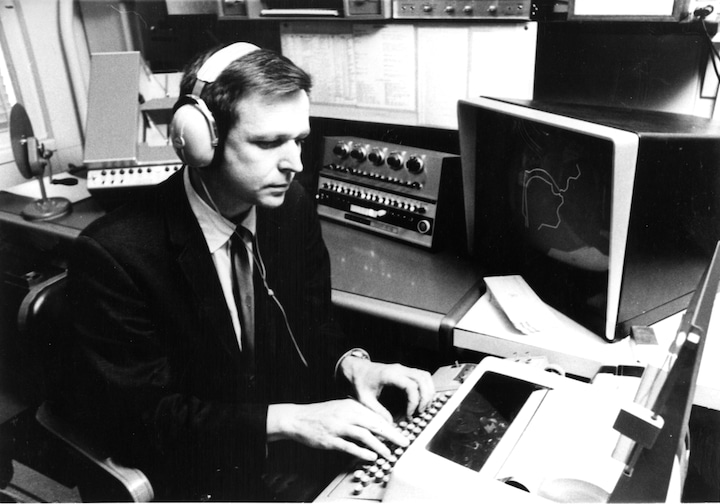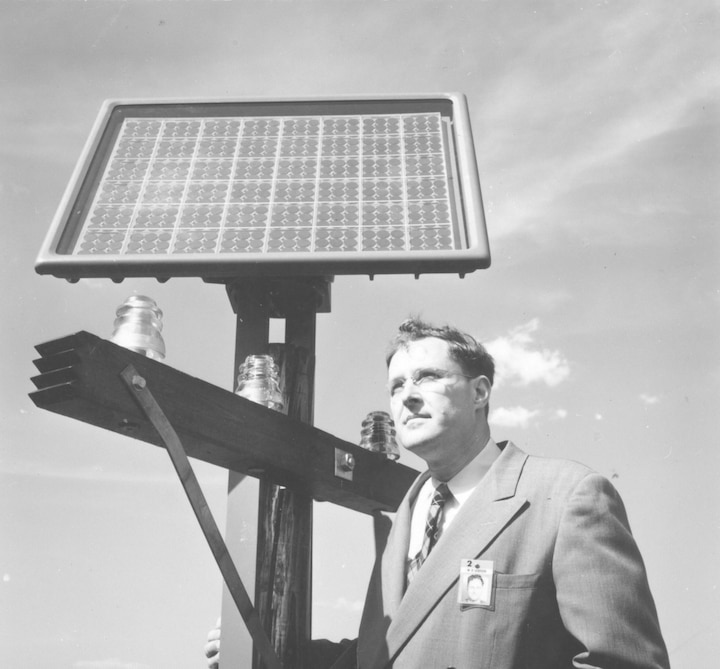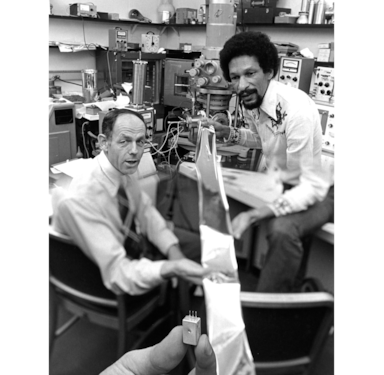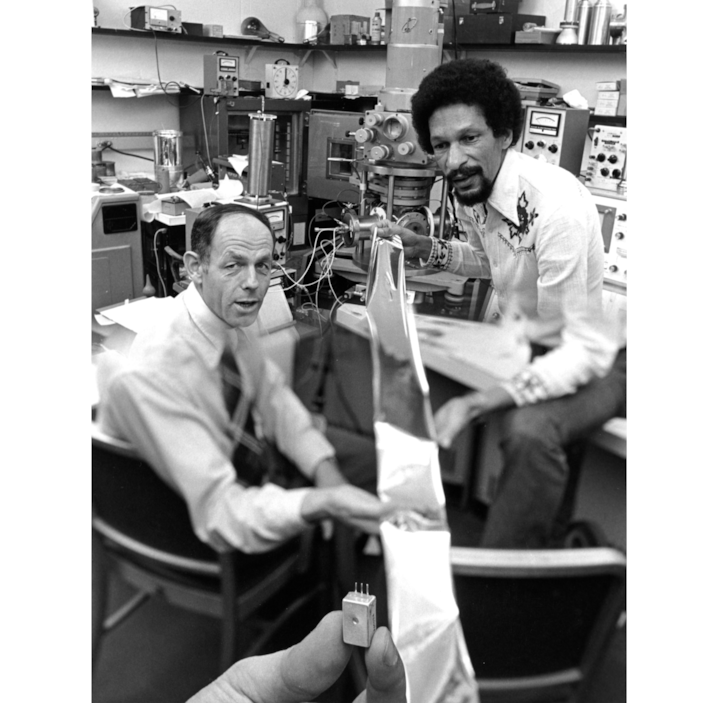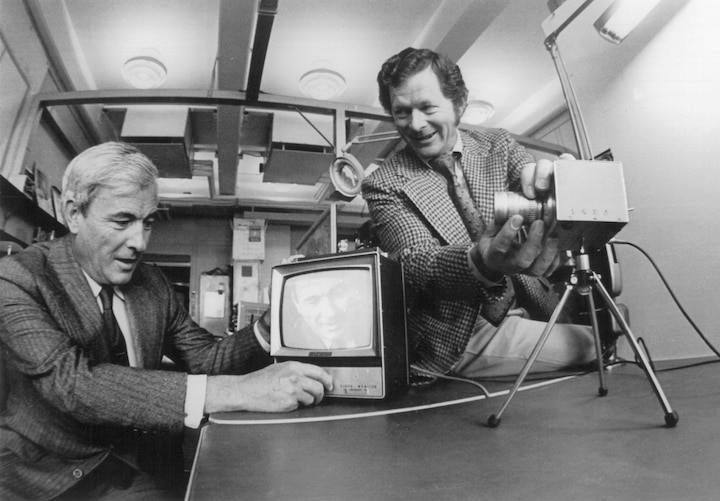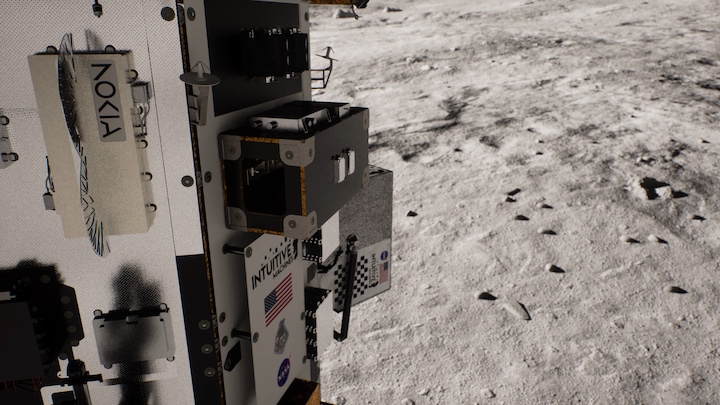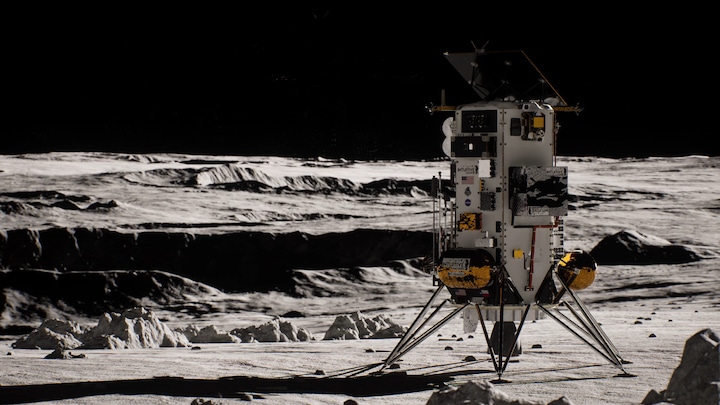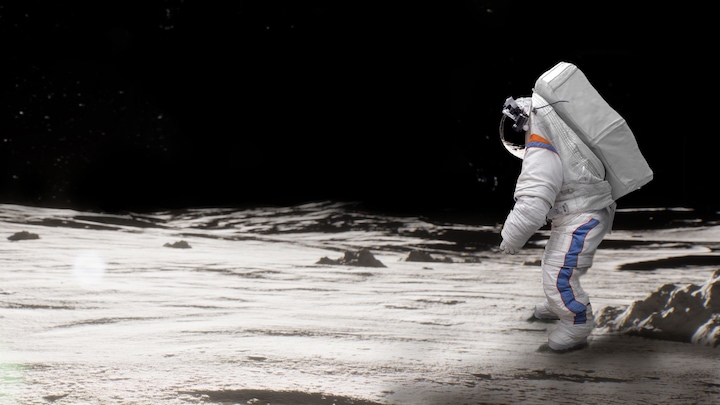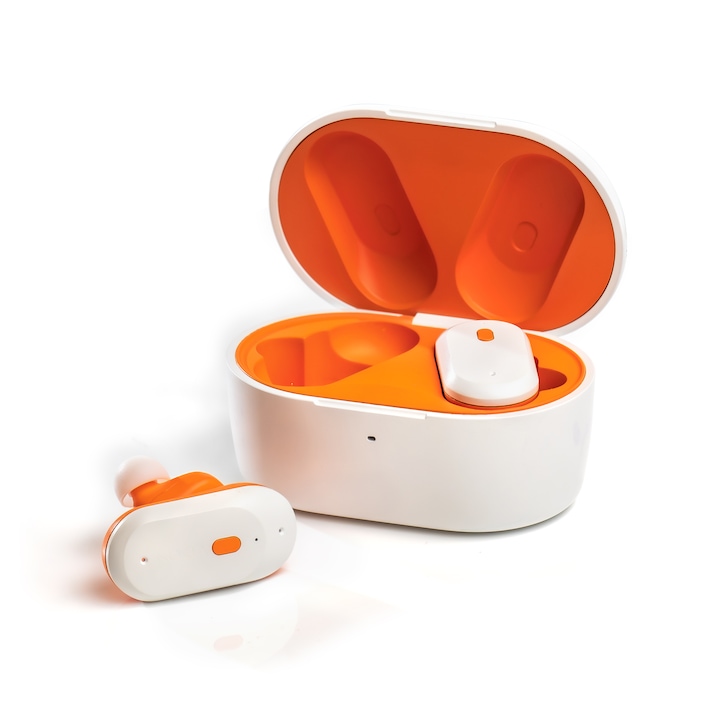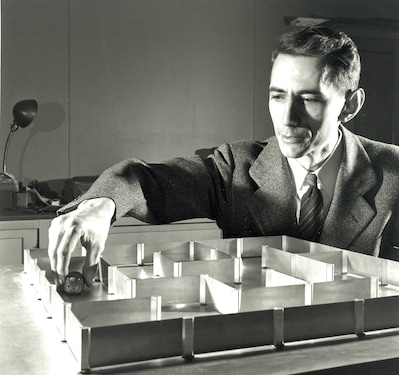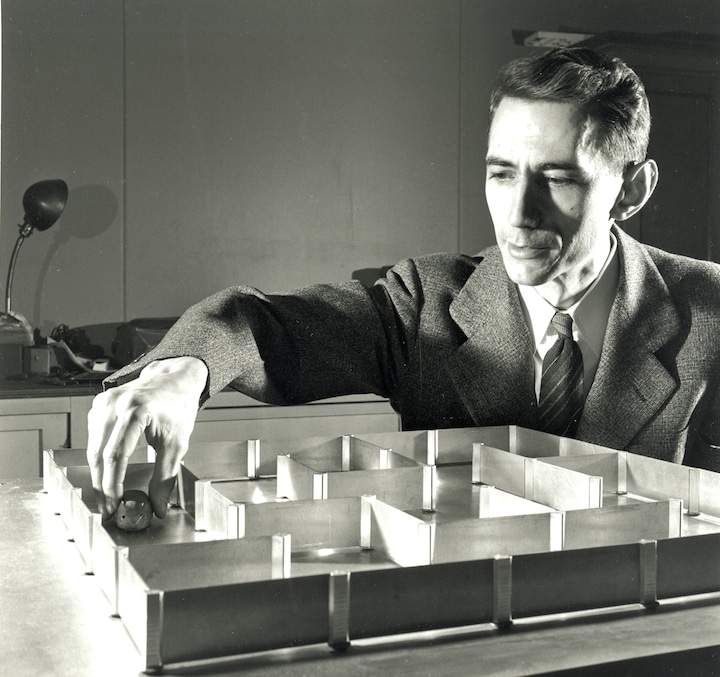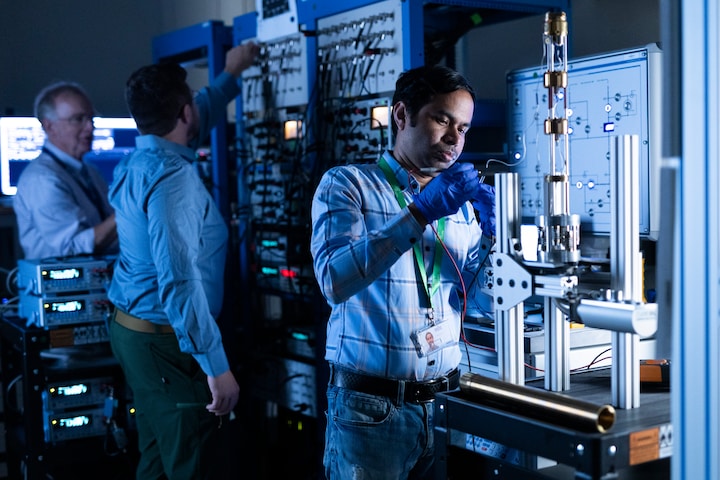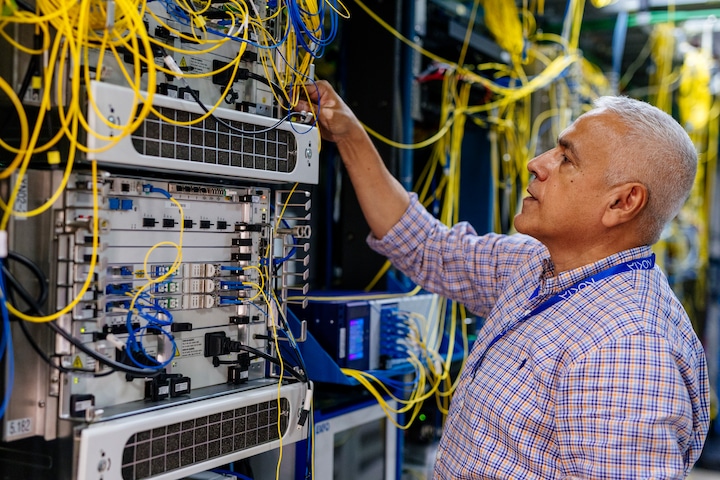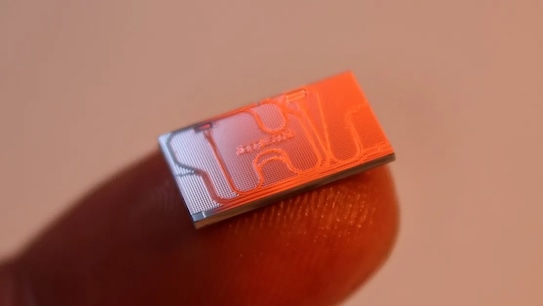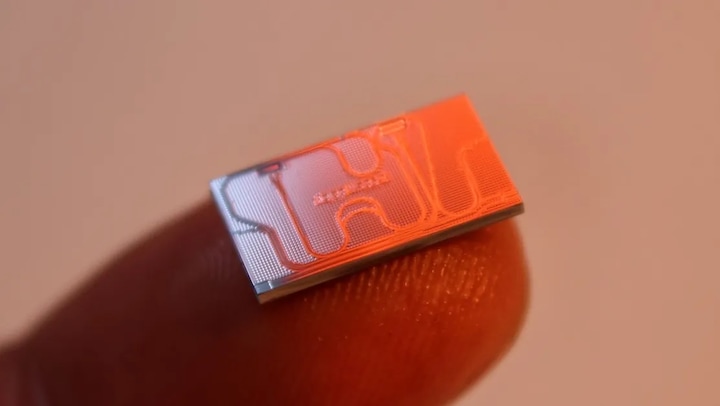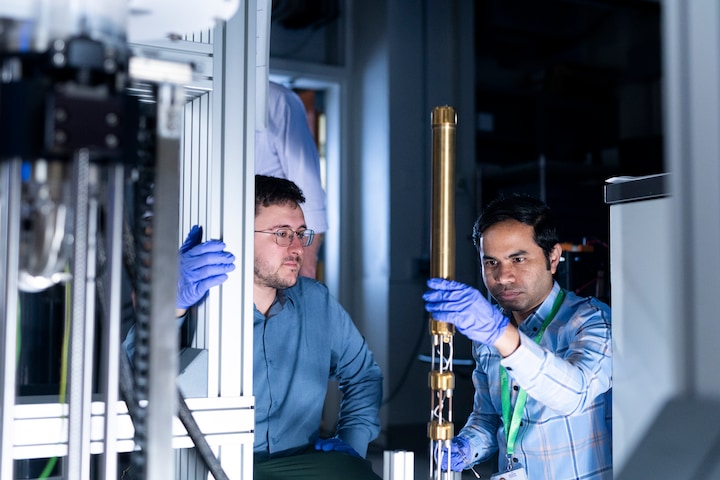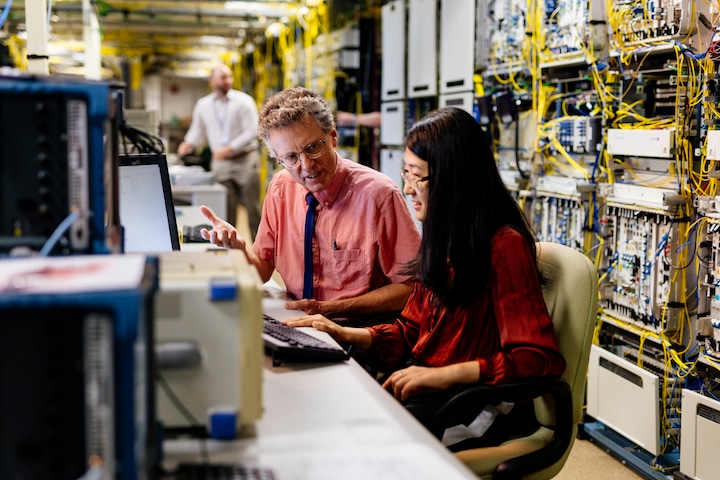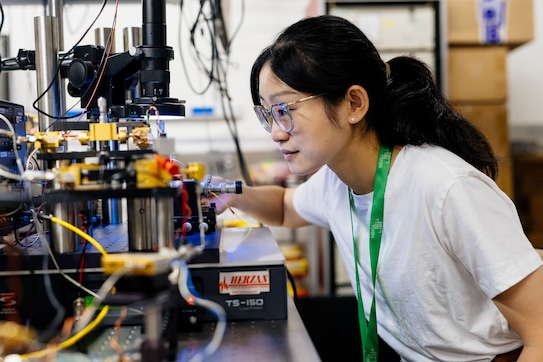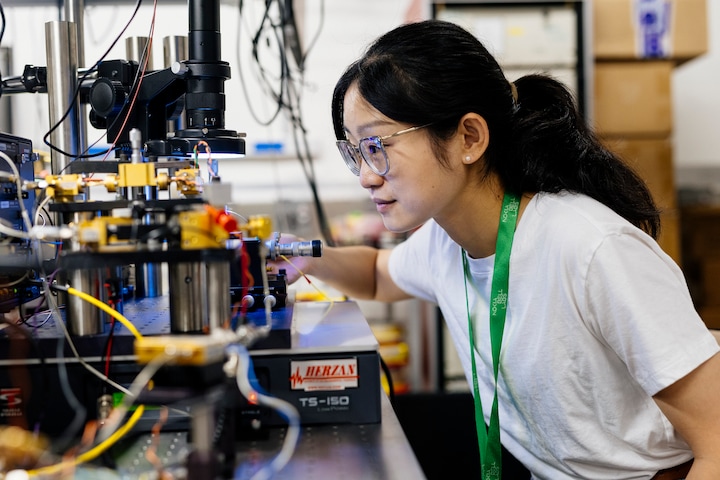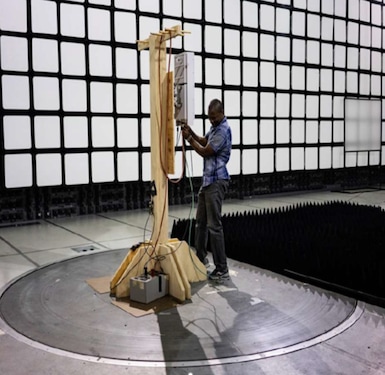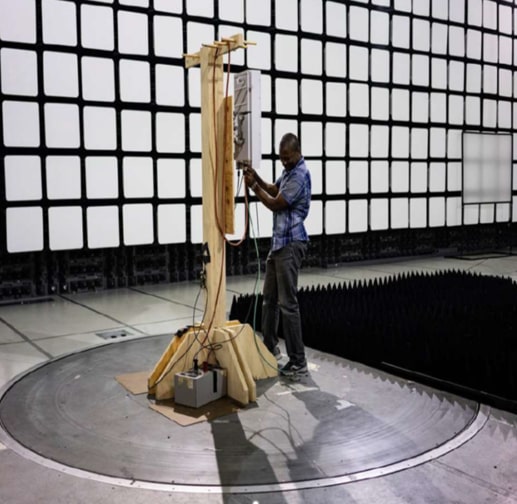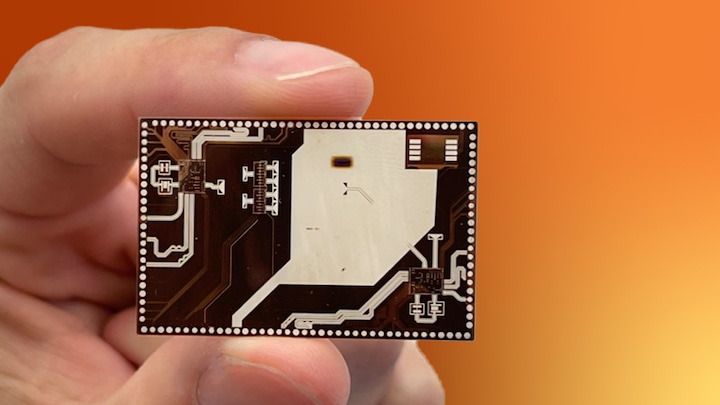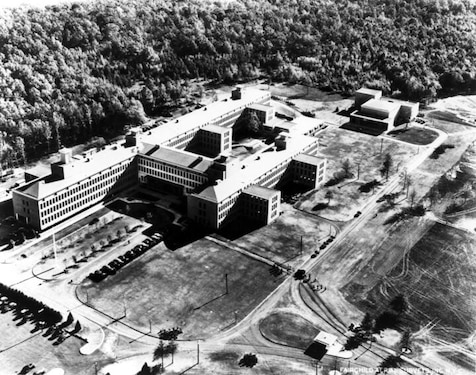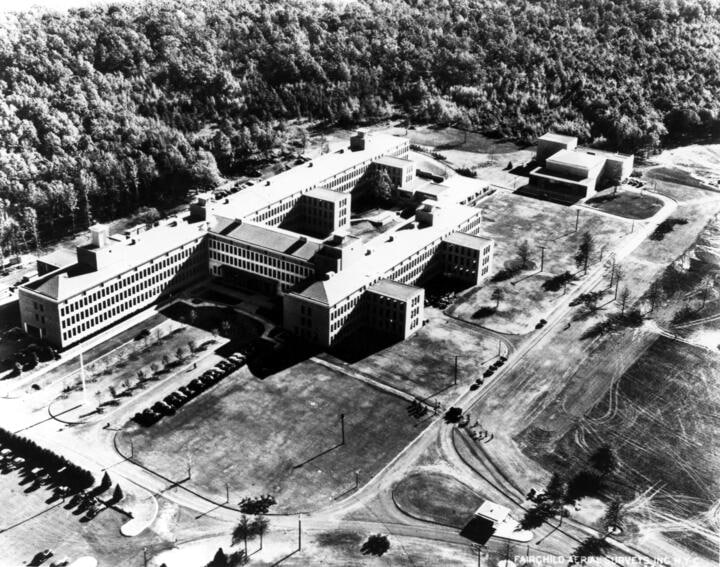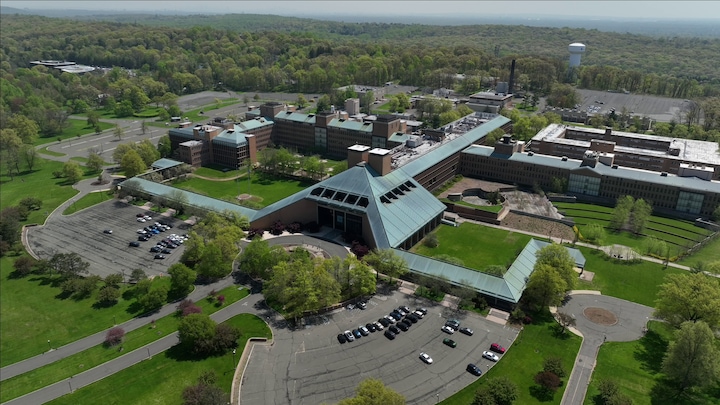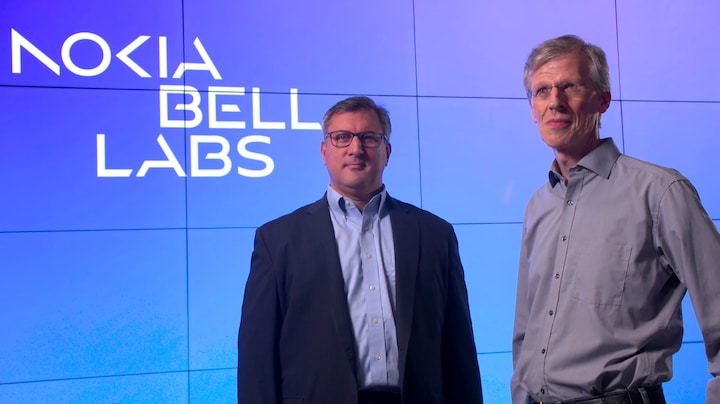Nokia Bell Labs Centennial
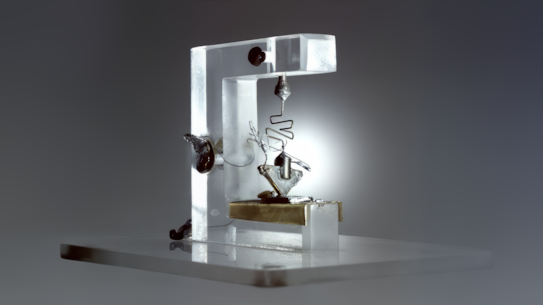
In 1947, the point-contact transistor was invented at Bell Labs. Its profound impact has completely changed our world, enabling the microprocessor, personal computers, smartphones, and the digital age in which we all live today.
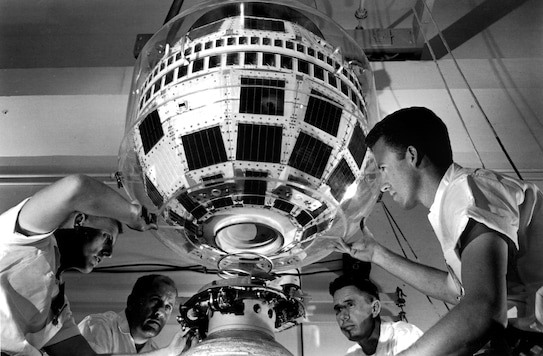
In 1962, Bell Labs and NASA launched Telstar 1, changing global communications forever. It was the first orbiting communications satellite to transmit TV signals.
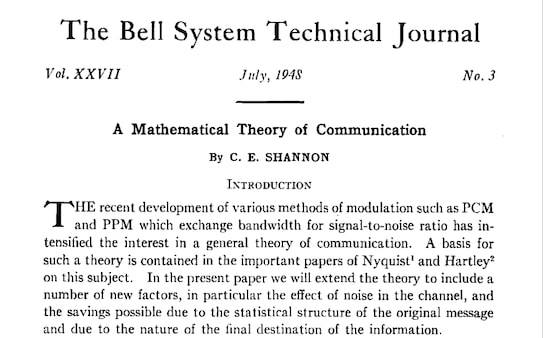
In 1948, Bell Labs researcher Claude Shannon develops the fundamentals of Information Theory, spawning the digital age.
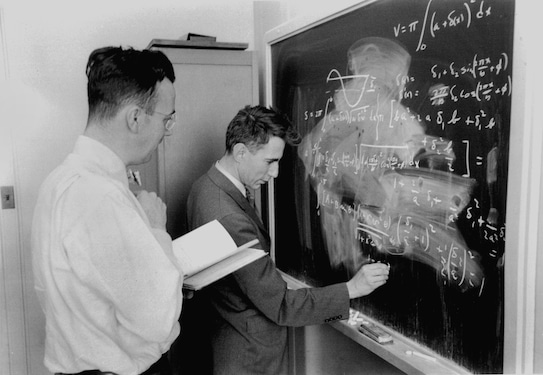
Claude Shannon (right) working at Bell Labs in Murray Hill, New Jersey.
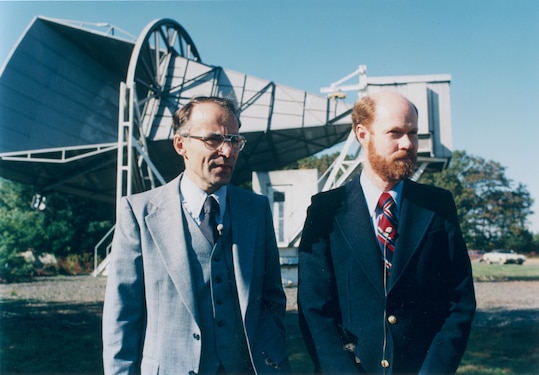
Arno Penzias (left) and Robert Wilson (right) in front of the Holmdel Horn Antenna. In 1964, they confirmed the “Big Bang” theory of the origins of our universe and won the 1978 Nobel Prize for Physics for their discovery.
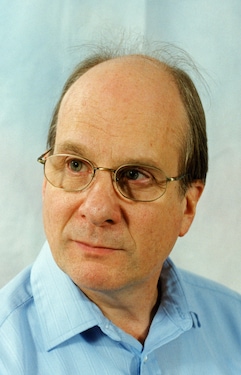
Louis E. Brus, a former Bell Labs researcher, was awarded the 2023 Nobel Prize in Chemistry, for the discovery and synthesis of quantum dots.
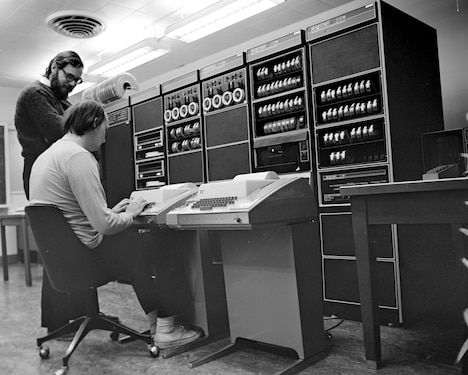
In the 1960s and 1970s, Dennis Ritchie (left, standing) and Ken Thompson (right, sitting) developed Unix, arguably the world’s most important computer operating system since it paved the path to the internet.
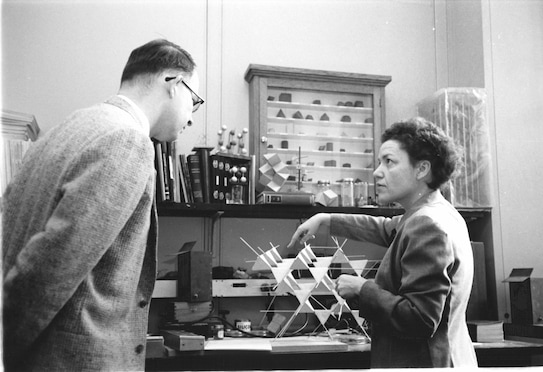
In 1942, Bell Labs hired its first woman scientist, Elizabeth Armstrong Wood, PhD. Wood co-founded the American Crystallographic Association (ACA) where she served as president in 1957.
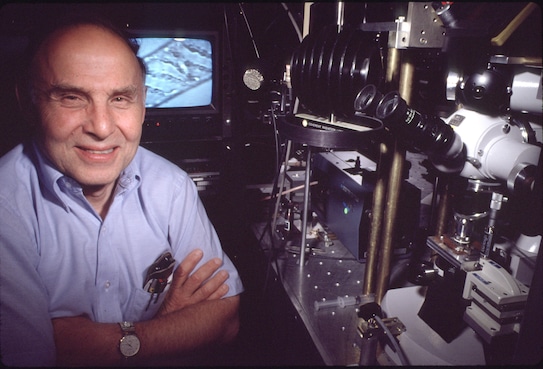
Arthur Ashkin. 2018 Nobel Prize Physics: Optical tweezers.
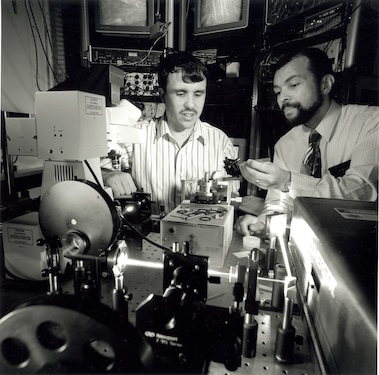
Eric Betzig (left). 2014 Nobel Prize Chemistry: Super-resolved fluorescence microscopy.
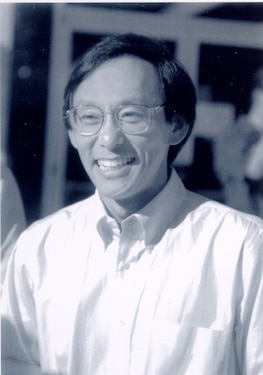
Steven Chu. 1997 Nobel Prize Physics: Cooling and trapping atoms with laser light.
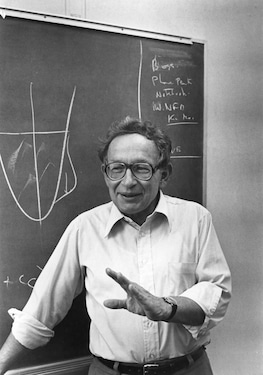
Philip W. Anderson. 1977 Nobel Prize Physics: Electronic structure of magnetic and disordered systems.
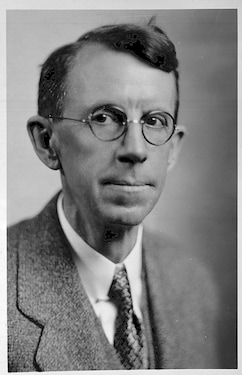
Clinton J. Davisson. 1937 Nobel Prize Physics: Electron diffraction by crystals.
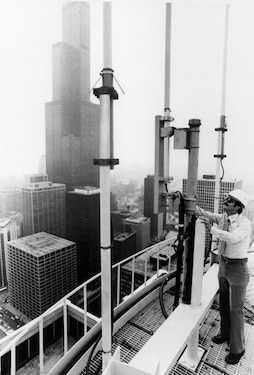
Bell Labs engineer Joe Nevarez inspects mobile telephone cellular system antennas in a roof top antenna platform in Chicago (1977).
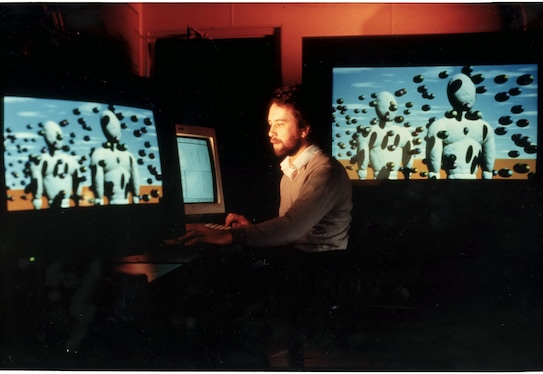
In 1997, Bell Labs researchers jointly pioneer digital television and high-definition TV (HDTV) in the U.S.
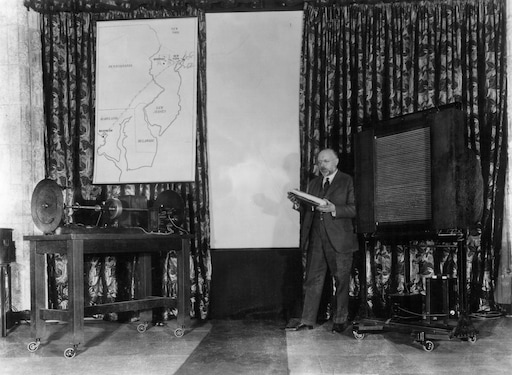
In 1927, Bell Labs demonstrated the first public demonstration of long-distance television transmission in the U.S.
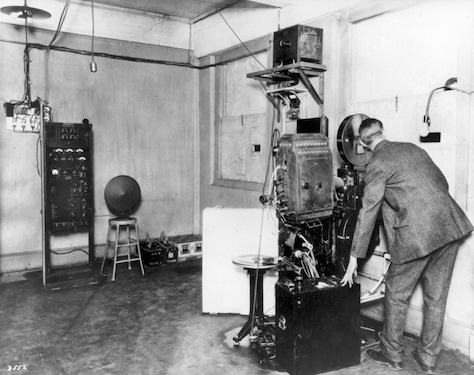
In 1926, Warner Brothers presents the first full-length motion picture with synchronized sound accompaniment, using equipment developed at Bell Labs.
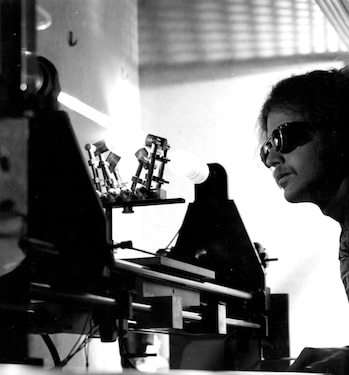
A new production approach, the modified chemical vapor deposition technique fuels the fiber optics revolution in which voice, data, and video are carried on hair-thin glass fibers (1973).
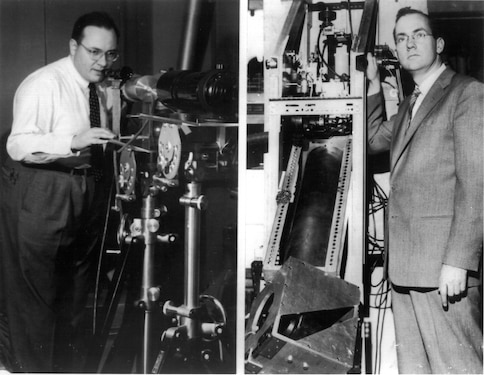
Bell Labs researchers Arthur L. Schawlow (left) and Charles H. Townes (right) invent the laser in 1958 that revolutionize not only the communications industry, but also materials processing, optical scanning, medicine, energy research and surveying.
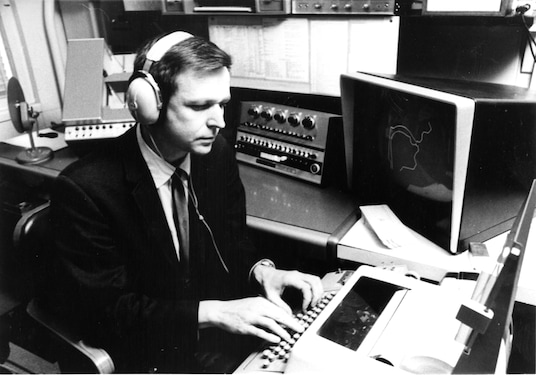
Bell Labs researcher John Larry Kelly, Jr. develops a digital vocoder able to support text to speech.
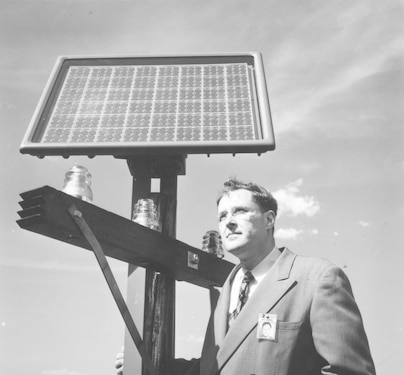
Bell Labs invented the solar cell in 1954 with the first successful device to convert the sun's energy directly and efficiently into substantial amounts of electricity.
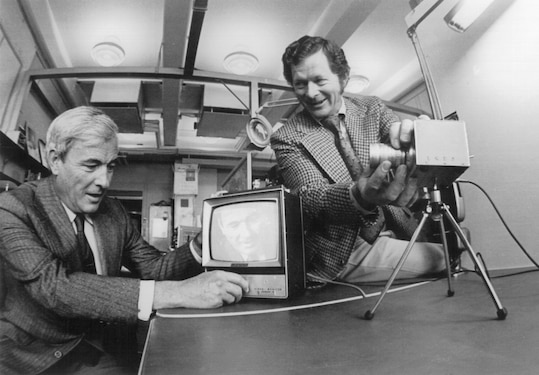
Invented by Bell Labs researchers Willard S. Boyle and George E. Smith in 1969, the charge-coupled device (CCD) foreshadow breakthroughs in imaging vis-a-vis digital cameras, medical endoscopes, and imagery systems used in astronomy.
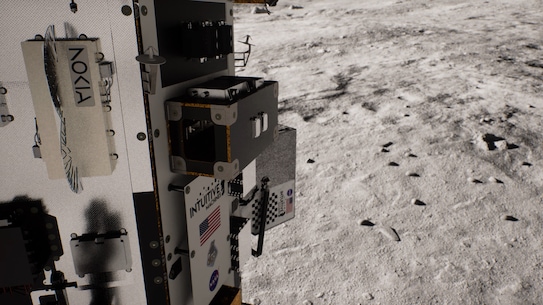
Nokia’s Lunar Surface Communications System (LSCS) pioneered by innovations and research from Nokia Bell Labs.
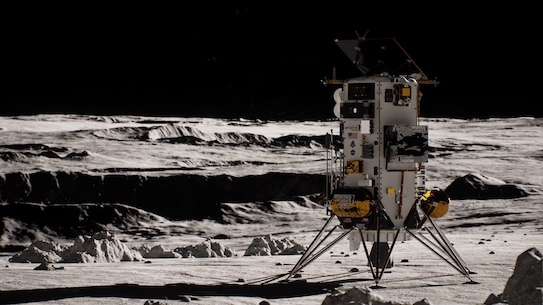
On board Intuitive Machines’ Nova-C lander Athena is Nokia's Lunar Surface Communication System (LSCS). As part of the IM-2 mission, Nokia will deploy the first cellular network on the lunar surface.
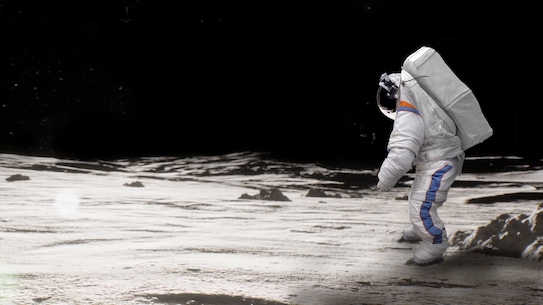
Nokia is partnering with Axiom Space to deliver a spacesuit-integrated communications system that will allow Artemis III astronauts to communicate while they explore the lunar surface.
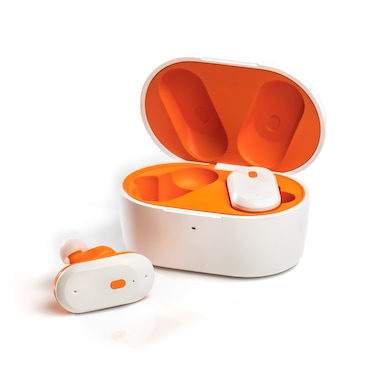
OmniBuds is the world’s first ear-worn AI/ML platform for physiological monitoring, introduced by Nokia Bell Labs and Cambridge Future Tech in 2024.
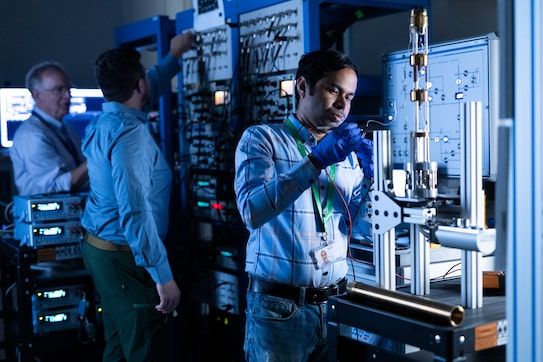
Nokia Bell Labs researchers working in the quantum computing lab.
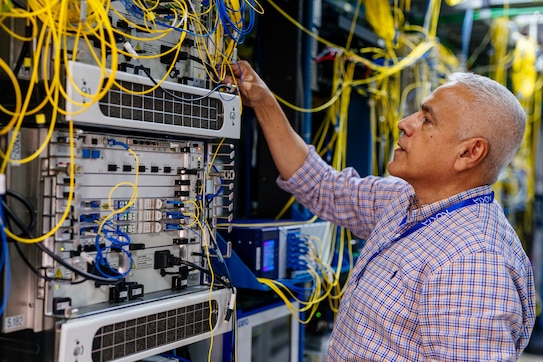
Nokia Bell Labs researchers pioneering innovations for the next 100 years.
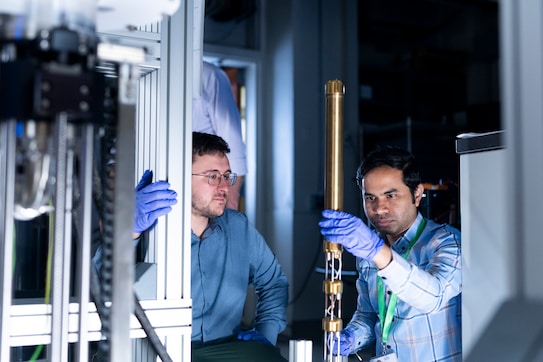
Nokia Bell Labs researchers working in the quantum computing lab.
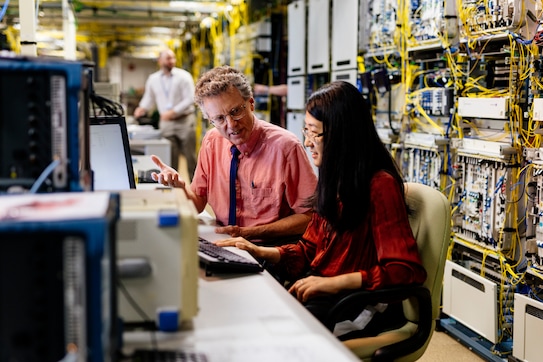
Nokia Bell Labs researchers pioneering innovations for the next 100 years.
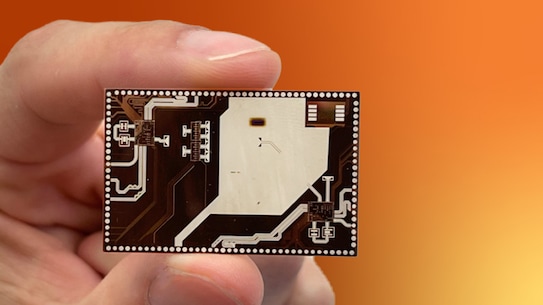
Radio frequency integrated circuit (RFIC) technology on a glass substrate will enable extreme data throughput for sub-terahertz communication.
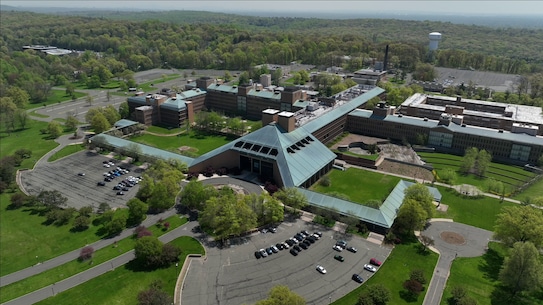
Aerial photo of Nokia Bell Labs Murray Hill, New Jersey.

Rendering of the new Nokia Bell Labs state-of-the-art research and development facility in New Brunswick, New Jersey, announced in December 2023.
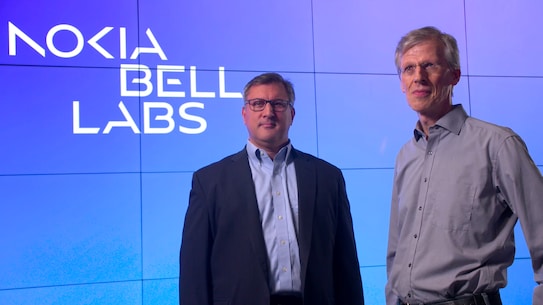
Nokia Bell Labs Presidents: Thierry E. Klein (left), President of Bell Labs Solutions Research at Nokia and Peter Vetter (right), President of Bell Labs Core Research at Nokia.
